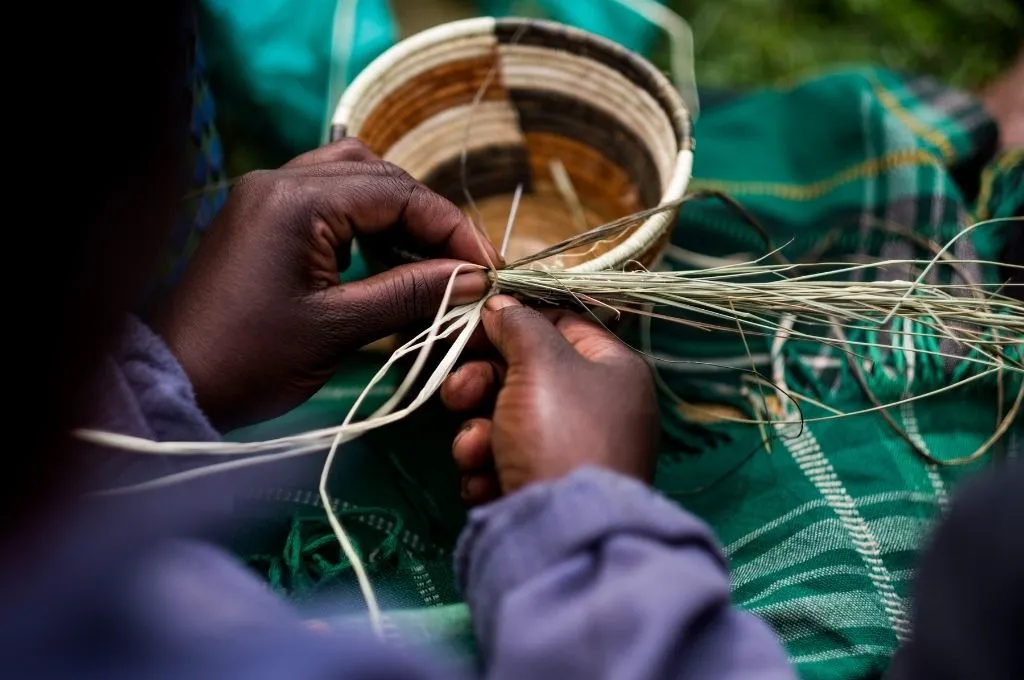When technology is discussed, it often conjures images of sleek screens and smart systems, not potters’ wheels or handlooms. Yet in India’s artisan economy, tools span a wide spectrum—from clay and code to artificial intelligence (AI) and the Internet of Things (IoT).
The New Formal framework helps redefine this diversity. It is a way of thinking about how formal and informal systems can work together, recognising artisan enterprises as sources of innovation rather than outliers. The framework proposes that formal enterprises should accommodate informality as part of their business model. It thus moves beyond binary notions of high versus low tech to recognise artisan enterprises as innovation hubs. The framework focuses on creating practical tools that fit the needs of the handmade sector.
For example, Sasha co-developed compact wood seasoning systems and decentralised wastewater systems with artisan communities, while the Laxmi Asu machine reduced physical strain on women from the Pochampally weaving community. These upgrades respect the rhythm of craft while improving well-being and productivity.

Supporting such community-driven innovation is key to building equitable, future-ready supply chains. But as supply chains modernise, some key questions remain: What is possible? What is useful? And what barriers still shape how technology is adopted in the handmade sector?
What does adopting new tech in the handmade sector look like?
Across India’s handmade sector, innovation unfolds not through disruption, but through thoughtful adaptation. Craft enterprises are deploying a range of technologies—digital, analogue, frugal, and deep tech—in ways that align with local ecosystems, knowledge systems, and craft realities.
An illustration of this is the Centre for Pastoralism, which uses AI, geotagged photography, and digital tracking to document wool traceability, prevent overgrazing, and capture the environmental logic of pastoralism. Their platform supports regenerative practices and brings visibility to herder knowledge and animal welfare.
Kosha.ai applies IoT and AI to provide secure digital identities, tracking, and ERP-integrated authentication systems for decentralised artisan enterprises.
Sasha anchors tech in health, safety, and working conditions. During the lockdown, they co-developed ergonomic home workstations for women artisans and piloted production tools with Fair Trade dashboards, green energy inputs, and decentralised wastewater treatment units.

These examples challenge the myth that the handmade sector is tech-averse. Instead, they reveal innovations grounded in lived realities that work.
Much like natural ecosystems, successful technology adoption thrives when decentralised. Instead of relying on a single, centralised model, each node strengthens the whole system by diversifying solutions. When each craft community adapts tools to its local environment, it contributes to shared goals through diversity and cooperation rather than uniform control.
Optimising instead of maximising enables the sector to recycle knowledge, adapt quickly, and use resources efficiently. This builds resilience that sustains cultural and ecological capital. It also helps the handmade sector innovate without exhausting people or the planet.

Key considerations and potential challenges
Adopting new technology in the artisan sector demands more than efficiency; it must align with the larger ecosystem. The goal isn’t just innovation, but also building tools grounded in indigenous knowledge, community needs, and sustainability goals. Here are some considerations for adoption.
- Relevance: Is the technology adapted to the context?
- Efficiency: Does it reduce time, manual effort, or resource use meaningfully?
- Evidence-building: Can it show where a product originates or comes from, track its journey, and confirm that it is genuine?
- Sustainability: Does it support biodiversity, soil regeneration, and animal welfare?
- Social equity: Are income, gender participation, and decision-making improving?
- Business viability: Are there measurable gains in product quality, pricing power, or access to new markets?
- Internal optimisation: Can the tech enhance workflows, improve tracking of MIS (management information systems including data on orders, production, payments, and timelines), or Fairtrade compliance (fair pay, safe work, and responsible materials, with verifiable records)?
- Stakeholder confidence: Is there proof of tangible returns that justify investment and uptake?
However, adoption isn’t a simple checklist.
Technologies often meet some criteria while compromising others. For example, training modules may build digital capacity but take time away from production. Barcode tagging promises transparency but adds hidden operational load to already stretched workflows. Uniform digital standards can streamline quality checks, but they risk flattening craft variations. Subsidised pilots may look attractive at first, yet long-term platform fees can drain margins. Digital traceability boosts buyer confidence but raises questions about data ownership. If platforms control records, artisans may lose bargaining power.
Many artisan enterprises—even experienced social businesses—adopt new technologies only after years of ironing out concerns and building community trust. Even then, gaps persist.
- Cost: Despite the low entry point of many tools (for example, AI subscriptions, Shopify, WhatsApp integrations), the total tech stack (full set of tools and platforms required) remains expensive for small enterprises.
- Talent: Finding affordable, skilled tech professionals for set-up and maintenance remains difficult.
- Clarity on return of investment (ROI) : Traceability systems and digital dashboards may offer long-term value, but benefits are not always immediately visible to producers. Often, introducing new tools shifts responsibilities onto artisans. Entry-level tasks such as photo documentation or dashboard updates can mean more unpaid labour. A traceability system might promise future gains, but for a craftsperson earning daily wages, long-term benefits feel intangible.
- Participation gap: Platforms like GeM, built to help enterprises sell their products or services to government organisations, remain hard to navigate without guided support—underscoring the need for co-designed, user-friendly digital tools.
But these challenges are about more than money or access. Adoption is not just technical—it’s emotional (does it fit the craft’s rhythm?), economic (does it pay off now?), and relational (will this produce value for my peers/community?).
Sustainable change must begin where artisans are, not where systems assume they should be.
What will it take to incentivise technology adoption?
Rather than retrofitting generic solutions to make technology work for the artisan economy, we need policies, infrastructure, and incentives that address the sector’s specific needs.
Priority actions need to include:
1. Support for frugal and context-specific innovation
While initiatives such as Rural Technology Action Groups (RuTAGs) and Comprehensive Handicrafts Cluster Development Scheme exist, their reach has been uneven. This is partly because the handmade sector has historically been treated as ‘informal’ and therefore peripheral to mainstream industrial or tech innovation. As a result, artisans often access support only through scattered pilot projects or nonprofit-led efforts, not sustained policy-backed pipelines. Strengthening these schemes to be more cluster-specific—tailored to local raw materials, production practices, and market needs—can help scale innovations that already work in smaller pockets.
2. Stronger industry–academia linkages
There are promising examples of grassroots–research collaboration. For example, IIT Guwahati’s DigiBunai™ software digitises traditional weaving patterns to help weavers adapt to modern textile design tools. Similarly, NID and IITs have partnered with RuTAG projects to improve tools such as looms, dyeing equipment, and ergonomic devices. These initiatives show how deep-tech solutions can be adapted when institutions co-create with artisan communities, though the scale is still limited.
3. Digital public infrastructure (DPI) for craft
A craft-focused DPI could mean open platforms where producer groups can map their inventory, access affordable traceability tools, and sell on equal terms. A comparable example is the Open Network for Digital Commerce, which is creating interoperable marketplaces for small retailers. A craft DPI built on similar principles would prevent monopolistic platforms from dominating artisan sales and ensure small clusters can plug into larger markets without prohibitive fees.
4. Workforce upskilling at multiple levels
This would mean providing digital and tech literacy across stakeholder groups—artisans learning how to use digital tools for design and sales; cluster-level organisations gaining skills in data management and online marketing; and policymakers understanding the ethical implications of emerging technologies such as AI. Without capacity building, digital tools risk becoming extractive rather than empowering.
5. Clear policy frameworks
There is a need for sustained and clear policy support that addresses certain concerns.
- Compliance: Ensuring artisans are not excluded due to complex GST, e-invoicing, or digital documentation norms.
- Intellectual property: Deciding who—the artisan, a collective, or the platform—owns designs generated with AI assistance.
- Environmental costs: Addressing the energy use and e-waste associated with digital systems, so that green crafts are not undermined by tech use.
6. Public–private partnerships
Such partnerships can help create shared technology hubs where artisans access tools (for example, 3D printing and digital design) without bearing the full cost. They also offer a space to test innovations for market readiness while embedding safeguards for ethical AI use.
When these actions are grounded in artisan realities, technology can strengthen heritage conservation, expand market access, and build future-ready creative economies.
Looking ahead: Forecasting and recommendations
As digital adoption accelerates, artisan enterprises must develop internal tech policies—not just for operations, but also to reflect their values. Technology should solve, not obscure, structural challenges. Ethical use, privacy, and equity must be embedded in design and deployment. Here are some key considerations moving forward.
1. Build internal clarity
Establish a long-term technology plan to align innovation with enterprise goals, team capacity, and community well-being. This prevents reactive adoption and ensures technology strengthens rather than distracts from the enterprise’s mission.
2. Centre the artisan
Commitments to transparency, equitable revenue sharing, and fair wage compliance must guide technology adoption, just as they do other business operations. Without this anchor, digital tools risk deepening precarity instead of supporting livelihoods.
3. Respect diversity of models
AI integration (or deliberate non-use) must be context-sensitive, not trend-driven. Lower-carbon craft economies shouldn’t be pressured into high-impact tech without clear returns. Valuing different models protects ecological sustainability and honours traditional knowledge that differentiates these crafts in global markets.
4. Understand hidden costs
From subscription layers to the environmental toll of data centres, technology comes with real trade-offs. Mapping these early allows enterprises to avoid debt traps and make more sustainable choices.
5. Incentivise shared learning
Founders fluent in tech should mentor lower-maturity players, building sector resilience. Peer-to-peer sharing reduces duplication of effort and builds collective bargaining strength with platforms and vendors.
6. Stay informed
Monitoring adjacent sectors—such as hardware, open-source tools, and platform shifts—helps artisan-led businesses prepare and adapt. This scanning broadens options and reduces dependence on a single technological pathway.
7. Support grounded research
Field studies should surface real needs, not assumptions, guiding more ethical, usable tech design. When artisans shape the research agenda, the resulting solutions have higher uptake and legitimacy.
Smart adoption must be community-led, ecologically aware, and strategically aligned, not just digitally enabled. To scale context-sensitive tech adoption in the handmade sector, stakeholders must invest in systems that reflect its core strengths: local adaptability, interdependence, and creative experimentation. This calls for nuanced capital strategies, blended finance models, and patient investment aligned with the sector’s rhythms and priorities. Infrastructure support, open innovation networks, and ethical digital public goods are equally vital. Far from being tech-averse, artisan enterprises are already prototyping for the future. To sustain and scale these innovations, they require long-term engagement, not quick fixes or piecemeal grants.
This article builds on insights from the session ‘From low tech to AI: Building tech-led efficiencies in craft-value chains’ at the Kula Conclave 2024.
—
Know more
- Learn more about what’s needed to enable the inclusion of artisans on e-commerce platforms.
- Read this article on how social impact actors can support the artisan economy.
Do more
- Attend the Kula Conclave to learn more about new innovations in the handicraft industry.




